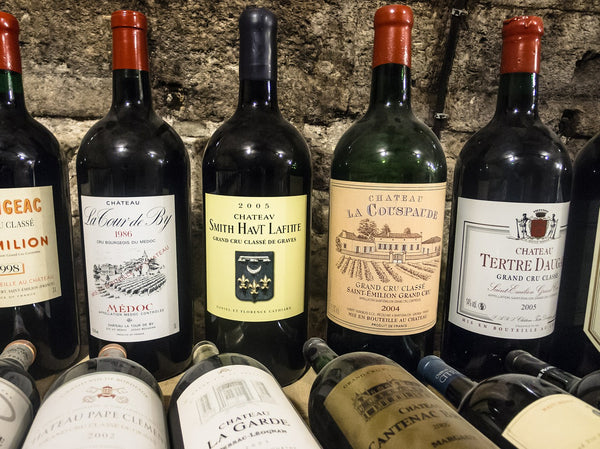France’s UNESCO Sites: Why Should Wine Investors Care?
Fine Wine Blog UNESCO Bordeaux UNESCO Burgundy UNESCO Champagne UNESCO Sites

The World Heritage designation is directed by UNESCO, the cultural arm of the United Nations and the manager of its UNESCO sites. This status is awarded to areas of cultural and natural significance that are of crucial value to worldwide history.
The official UNESCO site designation increases international interest in any site, and has the potential to increase tourism while also possibly helping the area earn funding for preservation.
UNESCO Sites In France
France is home to over 41 UNESCO sites on the World Heritage List, four of which are wine-making regions. Saint Emilion and Port of the Moon are both located within the Bordeaux region, while the regions of Champagne and part of Burgundy have only recently been granted the award.The recognition is greatly deserved by all of the awarded regions, and will help them better preserve for posterity. Additional effects such as increased tourism and a heightened interest toward the UNESCO regions’ wines result in increased value over time – which should be of interest to any wine enthusiast who considers investing.
1. UNESCO Site: Bordeaux
Bordeaux has two UNESCO World Heritage Sites – the Port of the Moon (Bordeaux’s port city) and also Saint Emilion, a village in the true heart of the Bordeaux area.The Port of the Moon is a historic city with amazing architecture from the age of the enlightenment. This city has more historically protected buildings than any other city in France except for Paris. It is recognized for its history spanning over 2000 years of cultural exchange and commerce, including as a capital city for world famous wine production.
Saint Emilion – the second UNESCO site in Bordeaux – is a small, pretty village in the center of the wine region. It is home to world class wine, excellent wineries, and beautiful architecture. It also boasts over 2000 years of history, with an important focus on world-class fine wine.
2. UNESCO Site: Burgundy
One of the most recently designated UNESCO sites, the wine-making region of Burgundy, was recognized for its grape cultivation and production.The Climats (vineyards) on the side of the Cote de Nuits and the Cote de Beaune (south of the city of Dijon) are the areas specifically recognized for preservation and recognition.
UNESCO states that "the site is an outstanding example of grape cultivation and wine production developed since the High Middle Ages.” A great example of a world-class wine region with a long history of innovation, Burgundy is a worthy addition to the world’s officially designated UNESCO sites.
3. UNESCO Site: Champagne
Along with Burgundy, the region of Champagne (where our favourite bubbly is produced) was very recently announced as a World Heritage Site.Its innovative production method was developed in the early 17th century and industrialized throughout the 19th century – a strong reason for UNESCO to recognize its cultural and historical significance.
The area includes production locations, cellars, champagne houses, and the vineyards of the Hautvilliers, Ay, Mareuil-sur-Ay, Saint-Nicaise Hill, the Avenue de Champagne, and Fort Chabrol.
UNESCO’s official designation of Champagne as a new UNESCO site states “the property bears clear testimony to the development of a very specialized artisan activity that has become an agro-industrial enterprise” – one that has come to be known and loved worldwide, we might add.
Investment Value of the UNESCO Status
Tourism in the UNESCO designated wine regions is expected to grow, as interest in World Heritage sites strengthens worldwide. Heightened attention (and free advertising) toward the regions is also likely to increase demand for their wines, which would naturally result in the appreciation of the tangible asset.This may create an excellent opportunity for savvy wine investors. If you’re looking for high quality wine from these regions, the best place to look is our online wine shop – where a wide selection of the world’s finest is a few clicks away from arriving at your doorstep.
If you need help making the most informed decision when investing in Bordeaux, Burgundy, or Champagne, the skilled wine experts of Moncharm would be happy to assist. Please feel free to write us a quick message or give us a call for any queries you may have, and we will respond promptly.
Image source: Montaplex


